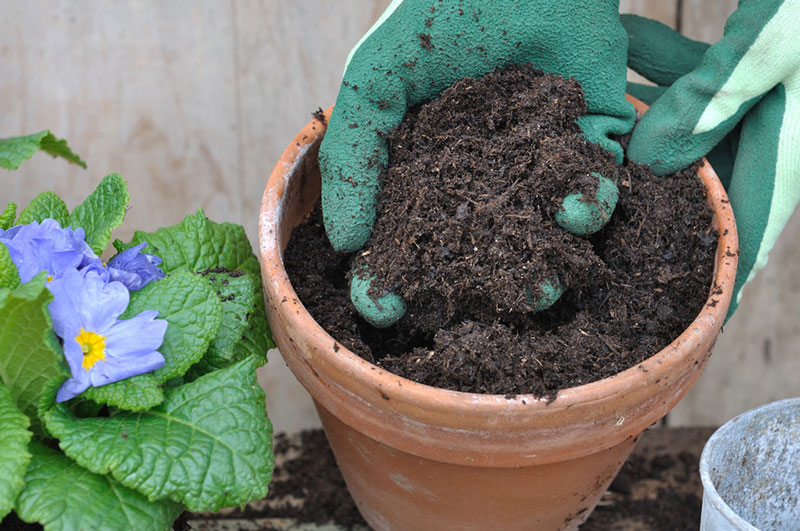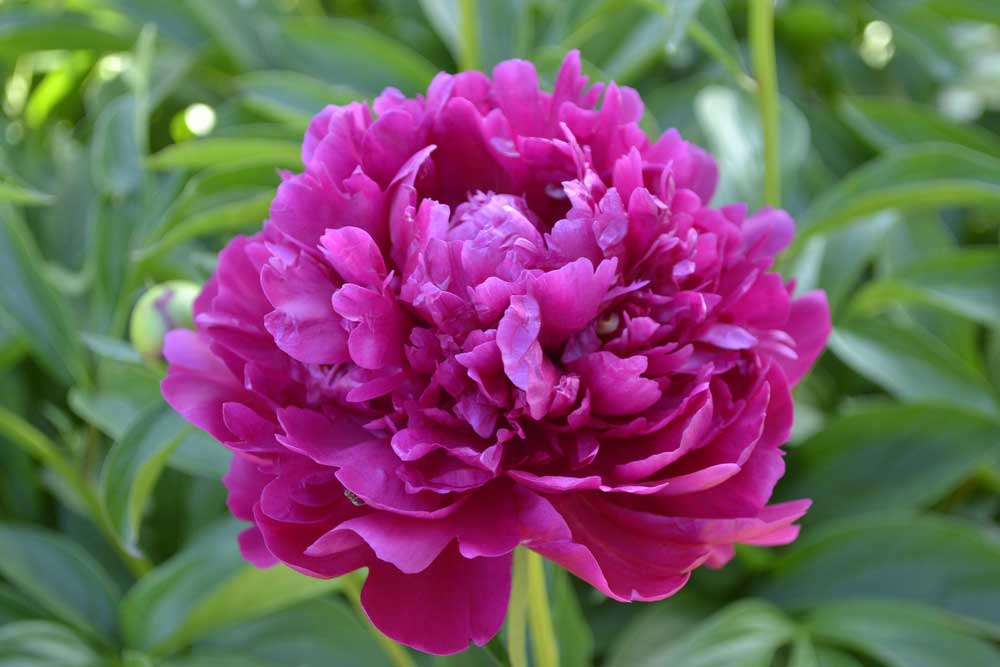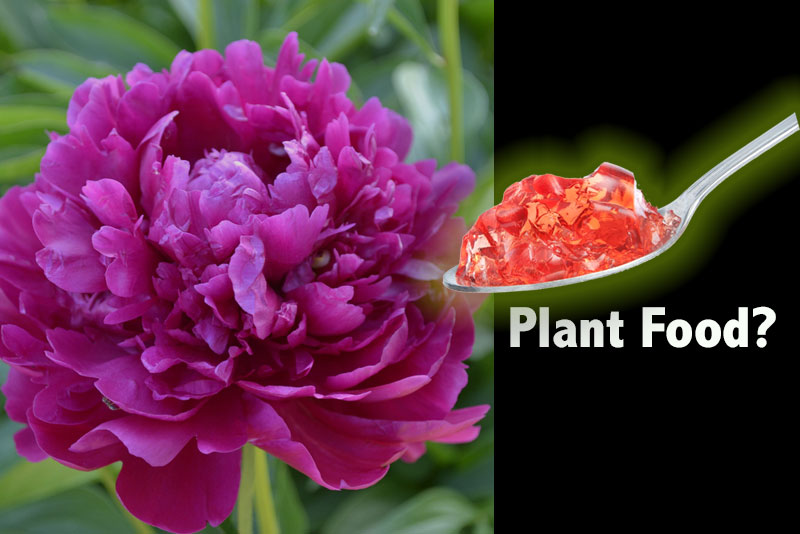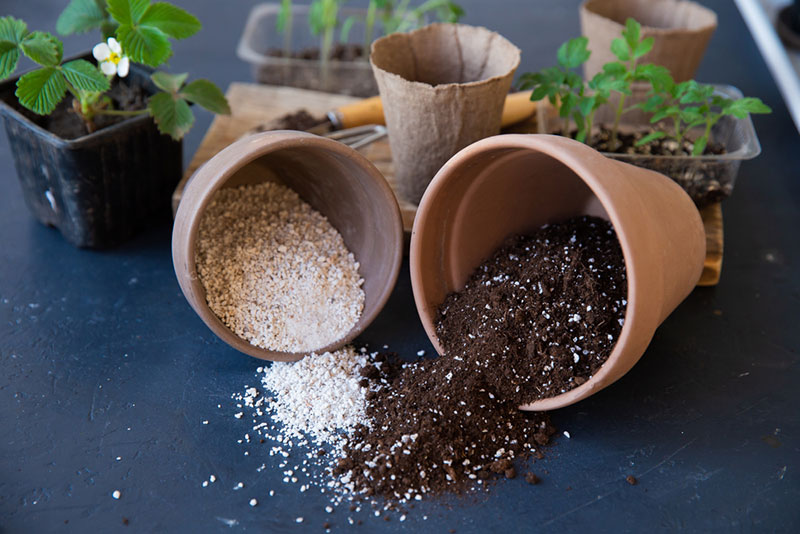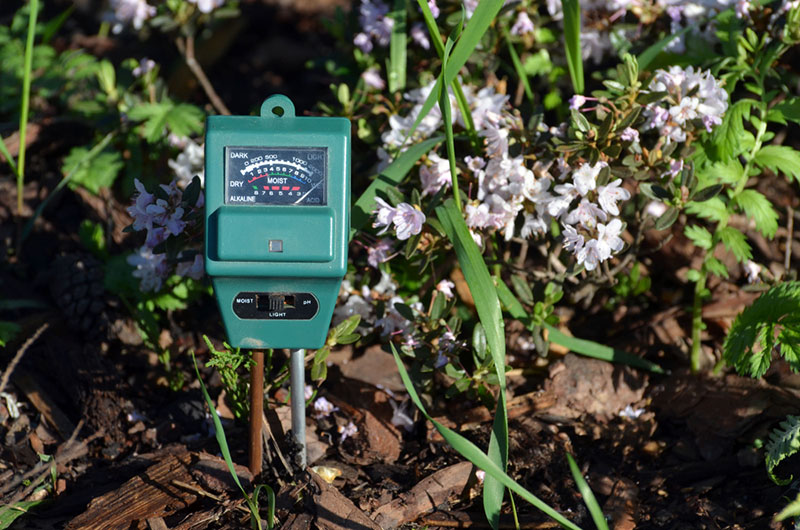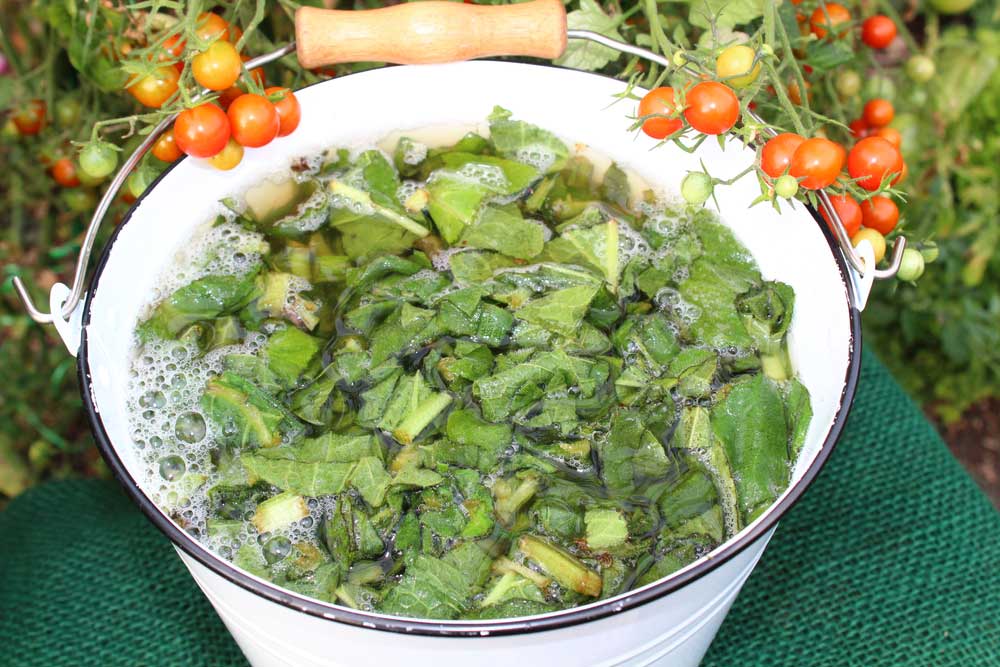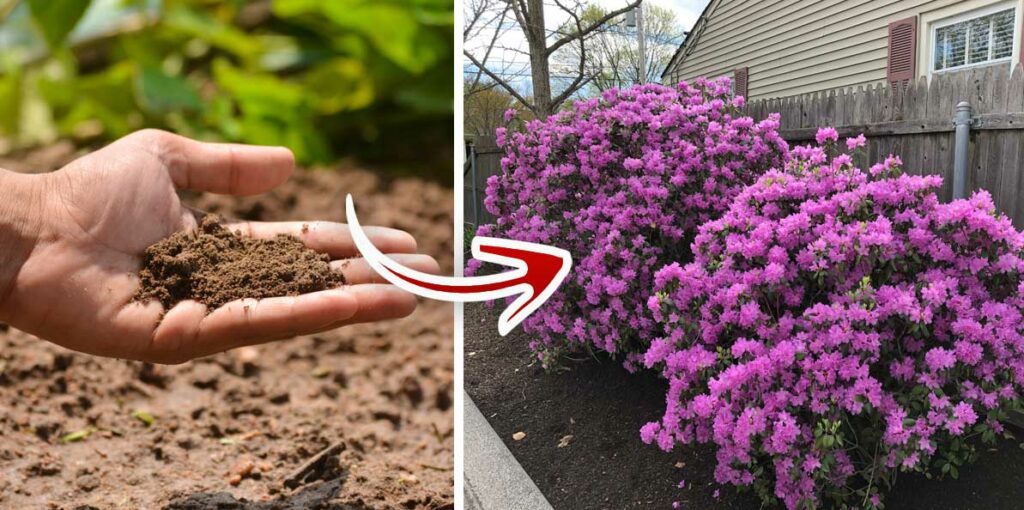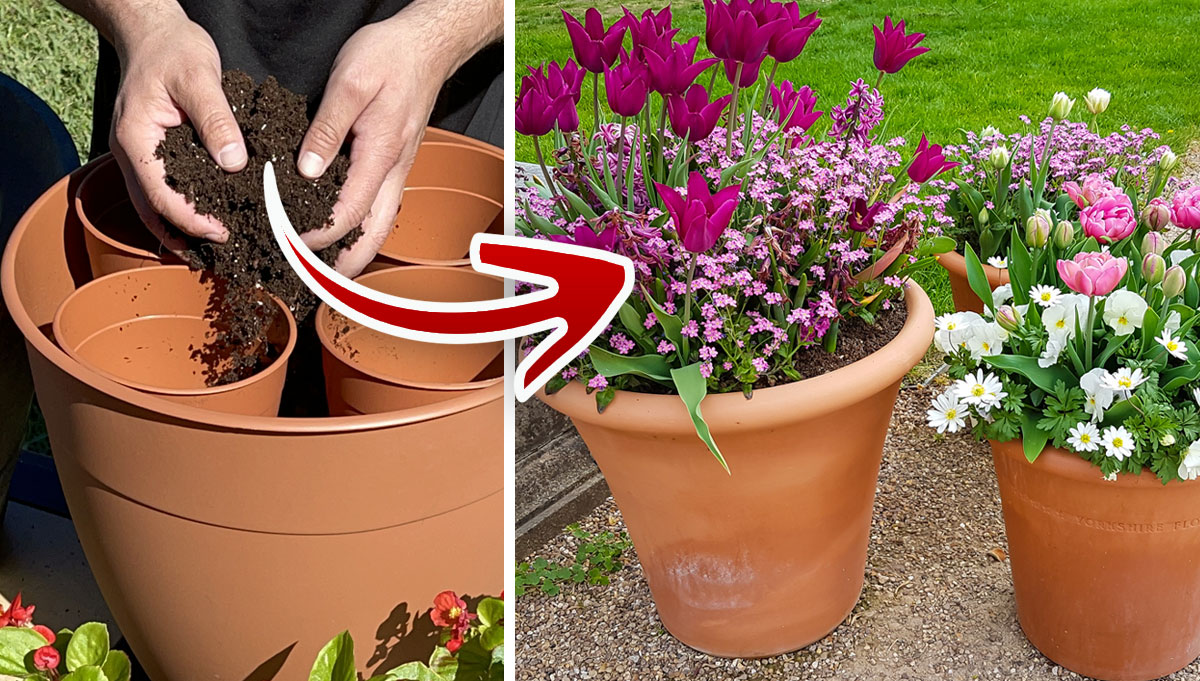
Potting soils and potting mixes come in a wide variety of formulas and can be found at garden centers and other plant outlets.
While there may be some good pre-made potting mixes available, they can be expensive, especially when you need to fill a lot of containers.
Making your own potting mix at home can save you money and ensure you always have it on hand when you need it.
Ingredients for Homemade Potting Mixes
- Garden Loam or Screened Compost
- Peat Moss
- Perlite
- Vermiculite (optional)
- Fertilizer (optional)
Tools You Will Need
- Wheelbarrow or large container.
- Bucket or Scoop for Measuring
- Garden hose.
- Shovel or large trowel for mixing.
- Airtight storage container.
Basic Soil-based Homemade Potting Mix Recipe
A good basic recipe for homemade potting soil mix is one part garden loam or screened compost, one part peat moss, and one part perlite or a combination of perlite and vermiculite. This recipe makes lightweight soil that drains well that is ideal for containers.
Note: While you can use garden loam right from your garden in this recipe, it may contain weeds, seeds, and insects. To avoid issues with weeds and seeds, you can sterilize the soil in the oven by heating it to 180 degrees, says the Michigan State University Extension. Otherwise, you can buy sterilized garden loam and compost at your local garden center.
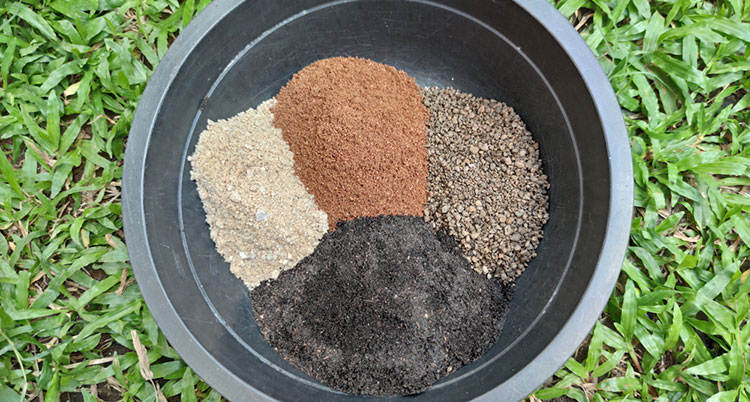
Homemade Soil-less Potting Mix Recipe
Some prefer to make a soil-less potting mix for their containers. The University of Arizona Extension recommends a mixture of one part perlite, one part compost, and two parts coconut coir to make a basic soil-less potting mix.
Which Is Better Soil-Based Potting Mixes or Soil-less Potting Mixes?
Soil-less mixes are sterile and free from pests, disease, and other contaminants that can be associated with ordinary garden loam or backyard compost. It also provides good aeration and drainage for your plants. However, soil-less potting mixes dry out quickly and increase the need for watering your containers.
Soil-less potting mixes are better suited for small containers, like hanging baskets and window boxes, while a soil-based potting mix works better for large containers of flowers or vegetables.
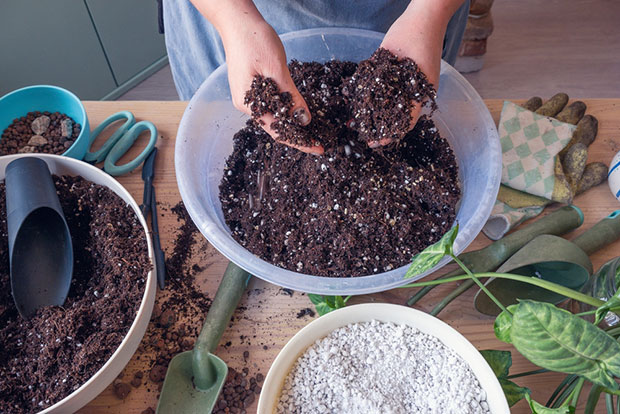
How to Mix Homemade Potting Mix
Mixing large quantities of the potting mix is best done in a wheelbarrow or other large container.
- Select the recipe for potting mix and gather your ingredients.
- Begin with the peat moss if you are making a soil-based potting mix or the coconut coir if you have chosen to go soil-less.
- Pour the peat moss or coconut coir into the wheelbarrow and moisten it with the garden hose. This makes mixing the ingredients easier.
- Add the garden loam or compost and mix them into the peat moss or coconut coir.
- Measure and pour the perlite (or vermiculite) into the wheelbarrow and mix all the ingredients thoroughly.
- Spray the mixture lightly with the hose to moisten it. It should feel slightly damp to the touch but should not be soggy.
- Fill your containers with the homemade potting mix.
- Store unused potting mix in an airtight container for future use.
Do you need to add fertilizer to homemade potting mixes?
If you have used garden loam or compost in your potting soil mix, you do not need to add fertilizers right away. The mix will likely provide the nutrients your plants need to thrive. Many gardeners prefer to omit fertilizer in the mix and then apply water-soluble fertilizer to their plants during the summer.
Let’s recap!
Making your potting mix is easy when you follow these simple steps.
- Choose your recipe.
- Choose your ingredients.
- Moisten the peat moss or coconut coir.
- Mix the ingredients.
- Fill your containers.
- Store unused potting mix in an airtight container.
Making your homemade potting mix allows you to control what goes into your plant’s soil mix and saves you money too. Try out one of these basic potting soil mixes for your containers today.

